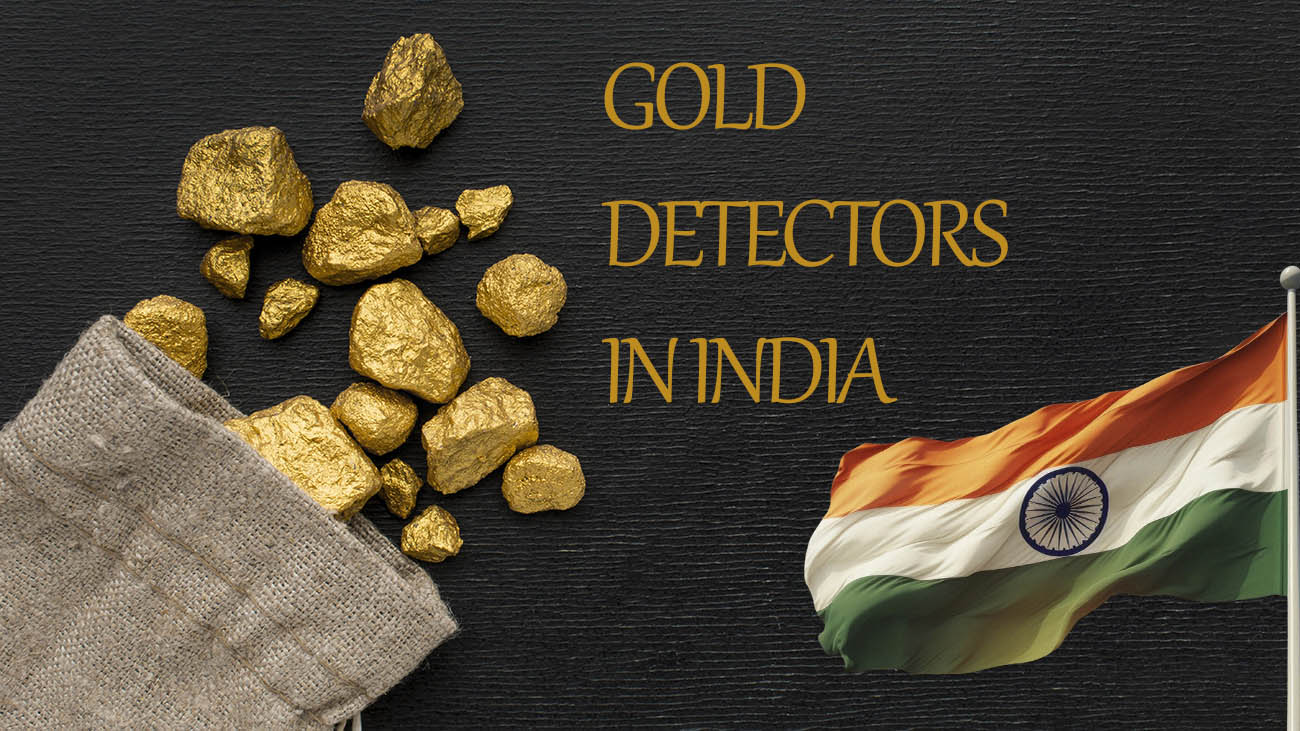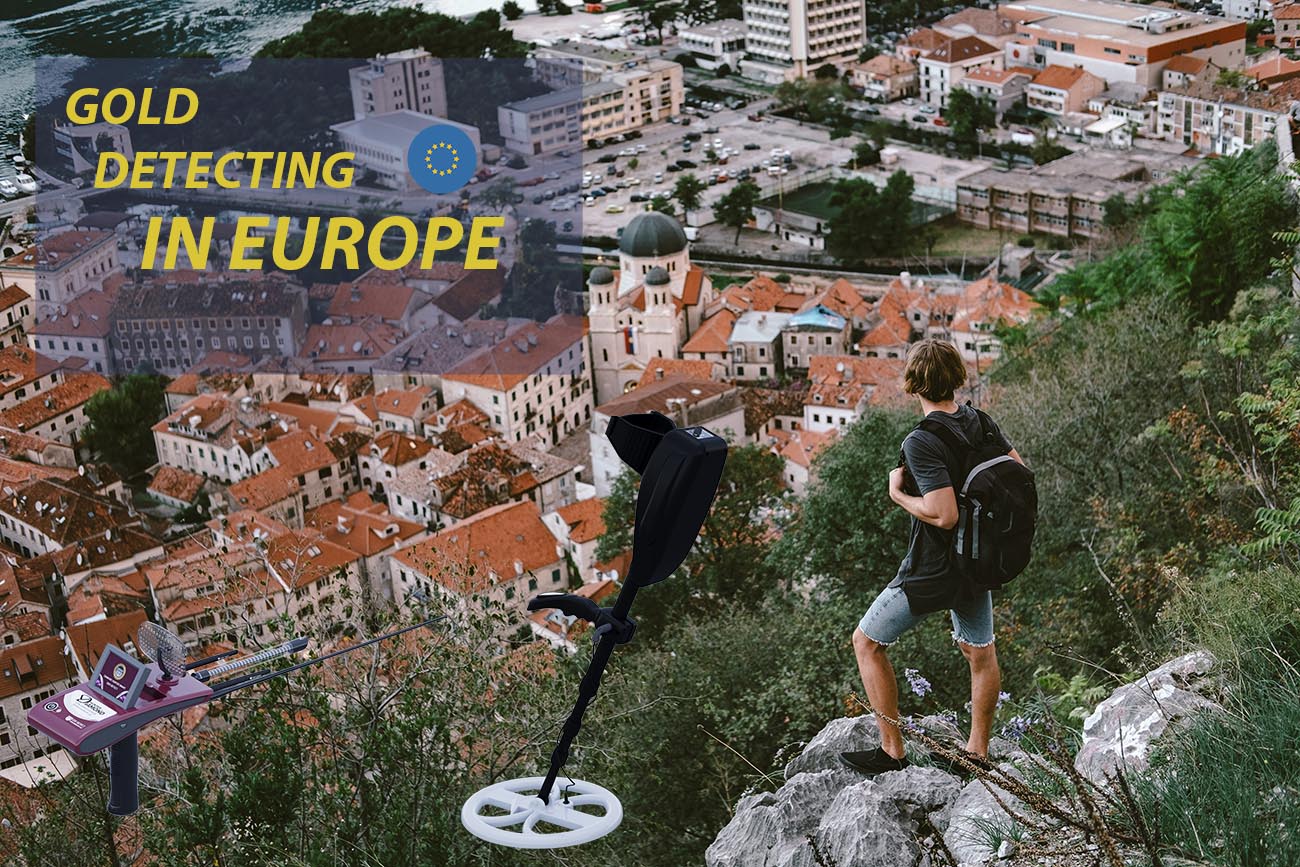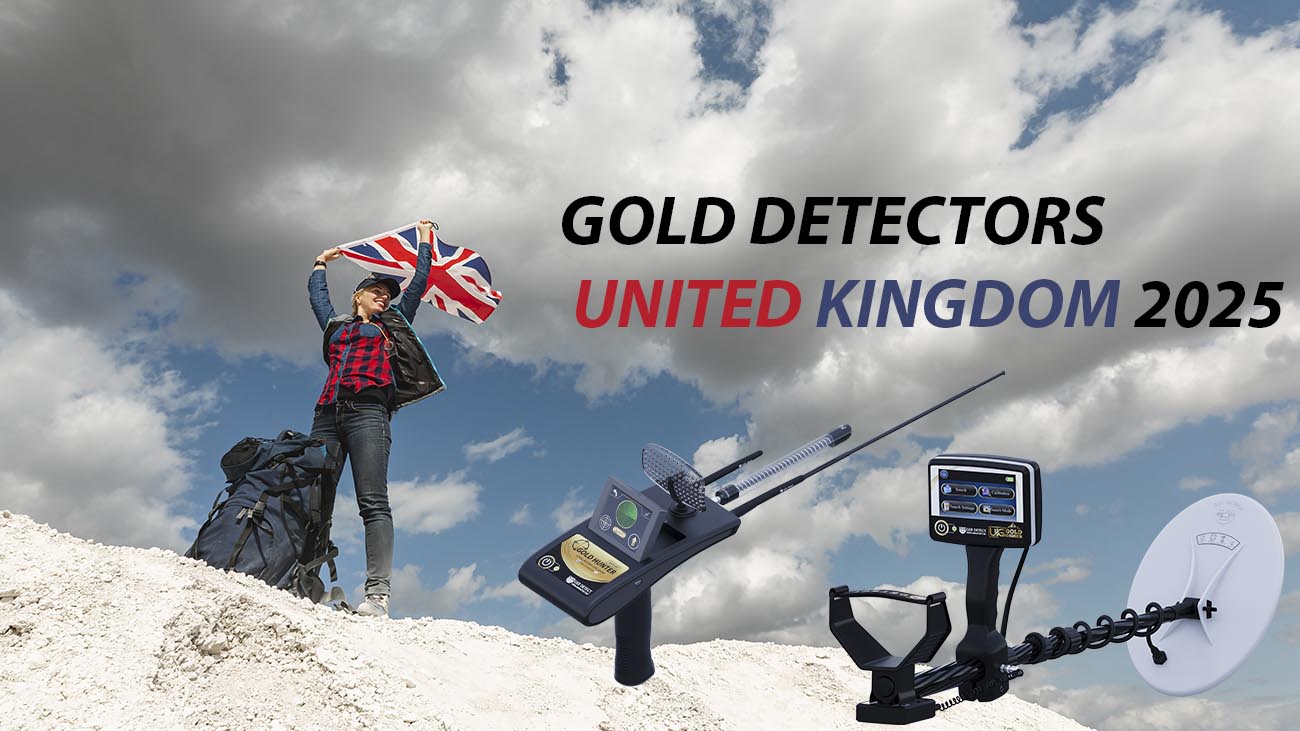Blogs
Gold Detectors in the USA 2025
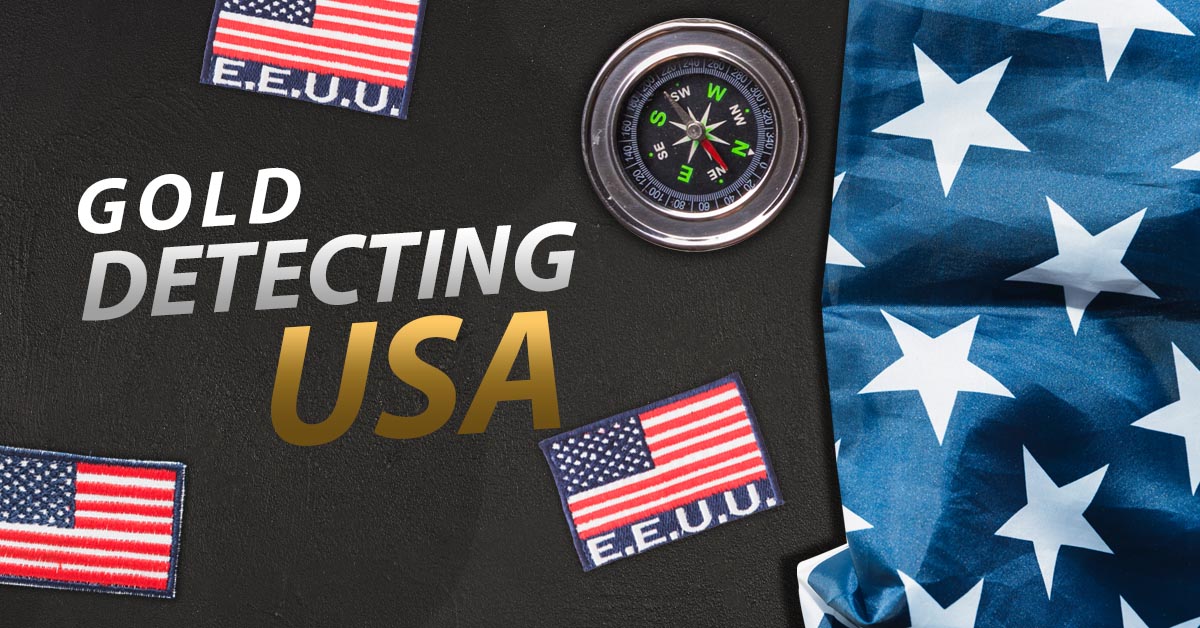
Table of Contents
Are you dreaming of unearthing lost treasures or striking it rich with a hidden gold nugget? The United States holds a rich history of gold prospecting, and with the right tools, you could be part of that legacy.
This comprehensive guide dives deep into the world of gold detectors in the USA for 2024. We’ll explore:
- The hottest new gold detector models for all experience levels
- Factors to consider when choosing the perfect detector for your needs
- Essential tips and tricks for maximizing your gold hunting success
- Laws and regulations for metal detecting in different regions of the USA
Whether you’re a seasoned prospector or a curious beginner, this guide will equip you with the knowledge to confidently embark on your gold detecting adventure. So, grab your boots, dust off your hat, and get ready to uncover the hidden riches the USA has to offer!
History for Finding gold in the USA
The history of gold finding in the USA is a thrilling tale of prospectors, pioneers, and the lure of riches. Here are some key points to capture that spirit for your blog post:
- Early Discoveries (1700s): While whispers of gold existed, the first documented find goes to North Carolina in 1799. Small mining operations started there soon after.
- The California Gold Rush (1848): This is the big one! James Marshall’s discovery in 1848 at Sutter’s Mill transformed California. News spread like wildfire, sparking a mass migration (the “Forty-Niners”) and forever changing the West.
- Gold Rushes Beyond California (1800s): The California Rush wasn’t alone. Gold discoveries in Colorado (1858), Montana (1862), Nevada (1859), and other regions led to further prospecting booms and the rise of mining towns.
- Impact and Legacy: Gold rushes had a profound impact. They spurred westward expansion, fueled the economy, and led to technological advancements in mining. However, they also displaced Native American populations and had environmental consequences.
- Modern Gold Prospecting (Today): While large-scale mining operations dominate US gold production, recreational prospecting with metal detectors is experiencing a surge in popularity. Metal detectors offer a unique and exciting way for individuals of all ages and experience levels to participate in the time-honored tradition of gold exploration.
Metal detectors are incredibly effective tools for finding gold, especially small nuggets and flakes that might be easily missed by the naked eye. Modern detectors are sophisticated machines that can discriminate between different types of metals, helping prospectors focus on potential gold signals. With the right detector and proper technique, prospectors can significantly increase their chances of finding gold compared to traditional methods like panning.
The popularity of metal detecting for gold prospecting is fueled by several factors. First, it is a relatively affordable hobby compared to large-scale mining operations. Metal detectors come in a wide range of prices to suit different budgets, making it accessible to beginners and experienced prospectors alike. Second, metal detecting offers a sense of adventure and discovery. The thrill of the hunt and the potential to unearth a valuable gold nugget is a powerful motivator for many prospectors. Finally, metal detecting can be a social activity. Prospectors can join clubs or online forums to connect with others who share their passion for gold hunting. These communities provide valuable information on potential prospecting locations, best practices for using metal detectors, and the camaraderie of sharing experiences and finds.
By including these details, you provide a historical context for gold detectors in the USA. It highlights the enduring fascination with finding gold and positions your guide as valuable for those wanting to participate in this ongoing legacy.
Gold Detectors in the USA 2024
Best Gold Detectors in the USA 2024:
To find gold you need to choose the right gold detectors to do the job perfectly choosing detectors, that profs their durability and how effective they are is an important step before any thing , and looking no further UIG detectors provide you with the best and most effective gold detectors ever
Find all of them here click here
Gold Detectors in the United Estate 2024
Also here are some examples of some tools
UIG GOLD DIGGER device

The Uig Gold Digger operates with seven different search systems in one device, designed to detect buried gold, raw gold, treasures, and gold, bronze, and silver coins underground.
It works using the electromagnetic (VLF) system, an advanced automatic system with high precision in distinguishing between valuable and non-valuable metals.
The Uig Gold Digger provides gold prospectors with a highly efficient and easy-to-use tool.
This device features an automatic operation system that is unaffected by various types of soil, including wet soils, salt-rich soils, or mineral rocks (such as basalt). It can bypass all types of mineral rocks with its advanced calibration technology.
The device can detect buried targets at depths of up to 4 meters or more underground.
TITAN GER 1000

The Titan Ger 1000 is a comprehensive search station with five professional and innovative search systems in a single device, designed for detecting buried gold, hidden treasures, ancient artifacts, valuable metals, archaeological treasures, tunnels, corridors, caves, voids, diamonds, and gemstones underground.
This multi-system device is the result of advanced technology developed by UIG Detectors and GER Detect, making it the leading device globally. Its specifications and features are considered the ultimate dream for explorers and prospectors worldwide.
Our experts have developed the Titan Ger 1000 to address all the issues faced by researchers using traditional devices available on the market.
For the first time in modern technology, this device operates with five different search systems:
- 3D Imaging System
- Pulse Induction System
- Long-Range Sensor System
- Ionic Field Detection System
- Magnetic Metal Detection System
The device can reach depths of up to 45 meters underground with a front-range detection of 2,500 meters.
DEEP SEEKER device

The Deep Seeker is the first of its kind in the world, featuring five innovative systems designed to detect underground treasures such as buried gold, precious metals, ancient artifacts, caves, and voids beneath the earth’s surface.
Designed for gold prospecting, treasure hunting, and searching for precious metals and diamonds, the Deep Seeker operates efficiently across various terrains and in the most challenging weather conditions.
Developed by GER Detect and UIG Detectors, this device incorporates advanced technologies, making it the leading device globally. Its specifications and features are considered the ultimate tool for explorers and prospectors around the world.
Our experts have developed the Deep Seeker to solve the issues faced by prospectors who experience significant challenges with traditional devices available on the market.
For the first time in modern technology, this single device operates with five different search systems:
- 3D Imaging System
- Long-Range Sensing System
- Ionic Field Detection System
- Magnetic Metal Detection System
- Void Detection System
The device can reach depths of up to 40 meters underground, with a front-range detection of up to 3,000 meters.
Here is some proof about how effective our detectors are
Gold detecting Laws and Regulations in the United Estate 2024 :
Unearthing history with a glint of gold is a dream for many. But before you grab your metal detector and head out, it’s crucial to understand the legal landscape of gold detecting in the USA. There’s no one-size-fits-all answer, as regulations vary greatly by state and even by location. Here’s a breakdown to get you started:
Federal Laws:
The good news: there are no overarching federal laws prohibiting recreational metal detecting. However, federal regulations come into play on certain lands:
- National Parks and Monuments: Metal detecting is generally prohibited.
- Federal Wildlife Refuges: Restrictions may apply, so obtain a permit beforehand.
- Bureau of Land Management (BLM) Lands: Permits are usually not required, but check for specific regulations in your target area.
State Laws:
The real complexity lies with state-by-state regulations. Here’s what to expect:
- Permissions: Many states require permits for detecting on public lands.
- Restricted Areas: Archaeological sites, historical landmarks, and cemeteries often have metal detecting bans.
- Beach Detecting: Be aware that some states restrict or outright prohibit detecting on beaches.
- Finds Reporting: Laws regarding reporting discovered historical or cultural artifacts vary by state.
Local Laws:
Don’t stop at the state level! Local municipalities (cities, counties) may have additional ordinances governing metal detecting in parks or public areas.
Best Practices:
- Research, Research, Research: Before heading out, thoroughly research the laws and regulations of your target location. State government websites and metal detecting clubs are excellent resources.
- Get Permits: If required, obtain the necessary permits before you start detecting.
- Respect Private Property: Always get permission from landowners before detecting on private property.
- Be Responsible: Fill in any holes you dig and leave the area how you found it.
- Report Historical Finds: If you discover something that appears to be historically significant, report it to the authorities as required by law.
We will talk more about the State laws in the USA by each state – Click here to view the rules in details
Top Places for Gold Prospecting in the USA
While finding large gold nuggets is always a possibility, it’s important to remember that most recreational gold detecting yields small pieces, flakes, and dust. However, the thrill of the hunt and the historical significance of your finds can be very rewarding. Here are some of the top places to detect gold in the United States:
- Nevada: The state that produces the most gold in the US also has a lot of public land where you can metal detect. One popular spot is the Rye Patch State Recreation Area, which was once a productive gold mine.
- Alaska: Another state famous for its gold rushes, Alaska has many rivers and streams where placer gold can be found. Be sure to check the regulations for metal detecting on public land, as some areas are restricted.
- California: The California Gold Rush may be over, but there’s still gold to be found in the state’s many gold-bearing regions. The Sierra Nevada mountains are a good place to start your search.
- Arizona: Arizona has a long history of gold mining, and there are many areas where you can metal detect for gold. The Bradshaw Mountains and the Harcuvar Mountains are two good places to try.
- Oregon: Oregon’s beaches are known for their black sand, which can contain small amounts of gold. However, there is also gold to be found in the state’s rivers and streams.
These are just a few of the many places where you can metal detect for gold in the USA. With a little research and perseverance, you may just strike it lucky!
Types of Gold Found in the USA :
- Native Gold: This is the most common type of gold found by prospectors. It is pure gold that has not been combined with other elements. Native gold can be found in flakes, nuggets, or even wires.
- Lode Gold: This type of gold is found in rock and must be extracted using mining techniques. Lode gold is less common than native gold, but it can be found in larger quantities.
- Placer Gold: This type of gold has been deposited in streams and rivers by erosion. Placer gold is the most common type of gold found by hobbyists with metal detectors.
The size and shape of the gold you find will depend on the type of deposit you are searching. For example, placer gold is typically found in small flakes or nuggets, while lode gold can be found in larger chunks.
Here’s a breakdown of some additional details to consider:
- Size: Placer gold found with metal detectors typically ranges from tiny dust-like particles up to small nuggets. Finding large nuggets is uncommon but certainly a possibility that keeps detectorists excited.
- Purity: The purity of gold you find in the USA generally falls between 22 and 24 karats. This means it’s naturally alloyed with a small amount of other metals like silver or copper.
While placer and lode gold are the main targets, there’s a remote chance of encountering other gold-related finds:
- Gold Nuggets: These are the prized possessions of detectorists. They are naturally occurring lumps of gold, and their value increases with size and purity.
- Gold-Quartz Veins: These are rock formations where gold is embedded within quartz. Not directly recoverable by detector, they can indicate the presence of nearby placer deposits.
- Artifacts: In some areas, you might uncover historical items made from gold, like jewelry or tools. These finds have significant historical value and should be reported to the proper authorities.
How to Choose the Right Gold Detector for You in USA:
Here’s a breakdown on how to choose the right gold detector for you in USA:
Here’s a breakdown on how to choose the right gold detector for you in South Africa :
1. Experience Level:
- Beginner: A gold and metal detector that is easy to use, with the added feature of automatic ground balancing (calibration), is ideal for beginners in the field of prospecting. Devices like the Golden Way or Gold Hunter Smart are perfect for this level.
- Intermediate: For those with more experience, a detector with advanced features like metal discrimination control and ground balancing is recommended. The Gold Seeker or Titan 400 Smart are suitable devices for this level of expertise.
- Expert: For professionals in gold and metal detecting, the Uig Gold Digger offers high performance and professional customization options to accurately detect and distinguish gold from other metals. This is an ideal choice for expert-level users.
2. Target Gold Size:
- Small Pieces and Nuggets: A detector with a low-frequency (VLF) system is the best choice for detecting small gold nuggets, gold veins, and gold flakes.
The best devices with (VLF) system: Uig Gold Digger – Golden Way - Large Pieces: Larger pieces of gold are typically found at deeper depths, so a gold and metal detector equipped with a Pulse Induction (PI) system is ideal for detecting larger gold pieces.
The best devices with Pulse Induction (PI) system: Titan Ger 1000 – Gold Seeker
Benefits of Buying a Gold Detectors from us
We have provided many detectors for our following South Africa customers through out the past years, our sales team and after sales team are very helpful and assist our customers 24/7
Register today and we will help you with all your requirements
UIG detectors is here to assist you in finding your next Gold treasure and choosing the fit gold detector for you.
Register today to receive a free consultation, and our specialist will help you find your next gold detector.
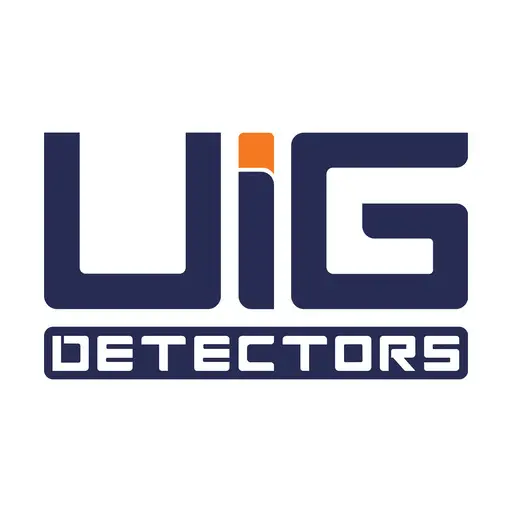
Here are some Important posts for you
FAQ
Can I find gold with a metal detector in the USA?
Yes, you can find gold with a metal detector in the USA, particularly placer gold deposits like flakes and nuggets. The article recommends certain areas with a history of gold prospecting, but emphasizes the importance of researching specific locations and regulations before heading out.
What type of gold detector should I get for finding gold in the USA?
The best gold detector for you depends on your experience level and the type of gold you’re targeting. Beginners should look for user-friendly detectors with automatic ground balancing. More experienced users can consider features like adjustable discrimination and sensitivity controls. For small gold flakes, a high-frequency detector is ideal. For larger nuggets or deep prospecting, a lower frequency detector is better. The article also highlights the importance of considering factors like mineralized soil and waterproof capabilities depending on your prospecting location.
Where are some good places to go gold prospecting in the USA?
The western states, particularly California, Nevada, Arizona, Montana, and Colorado, are popular destinations for gold prospecting due to their history of gold rushes. Other areas mentioned in the article include Alaska, Oregon, and the Southern Appalachian Mountains. Remember, research specific locations and regulations before you go.
What are the laws and regulations for metal detecting in the USA?
Metal detecting in the USA is subject to a complex web of laws and regulations that vary depending on location. Federal lands managed by the National Park Service and US Fish and Wildlife Service generally prohibit metal detecting. Each state has its own set of laws governing metal detecting on public lands. Local ordinances within counties and municipalities may also regulate metal detecting. Always obtain permission from the landowner before metal detecting on private property.

